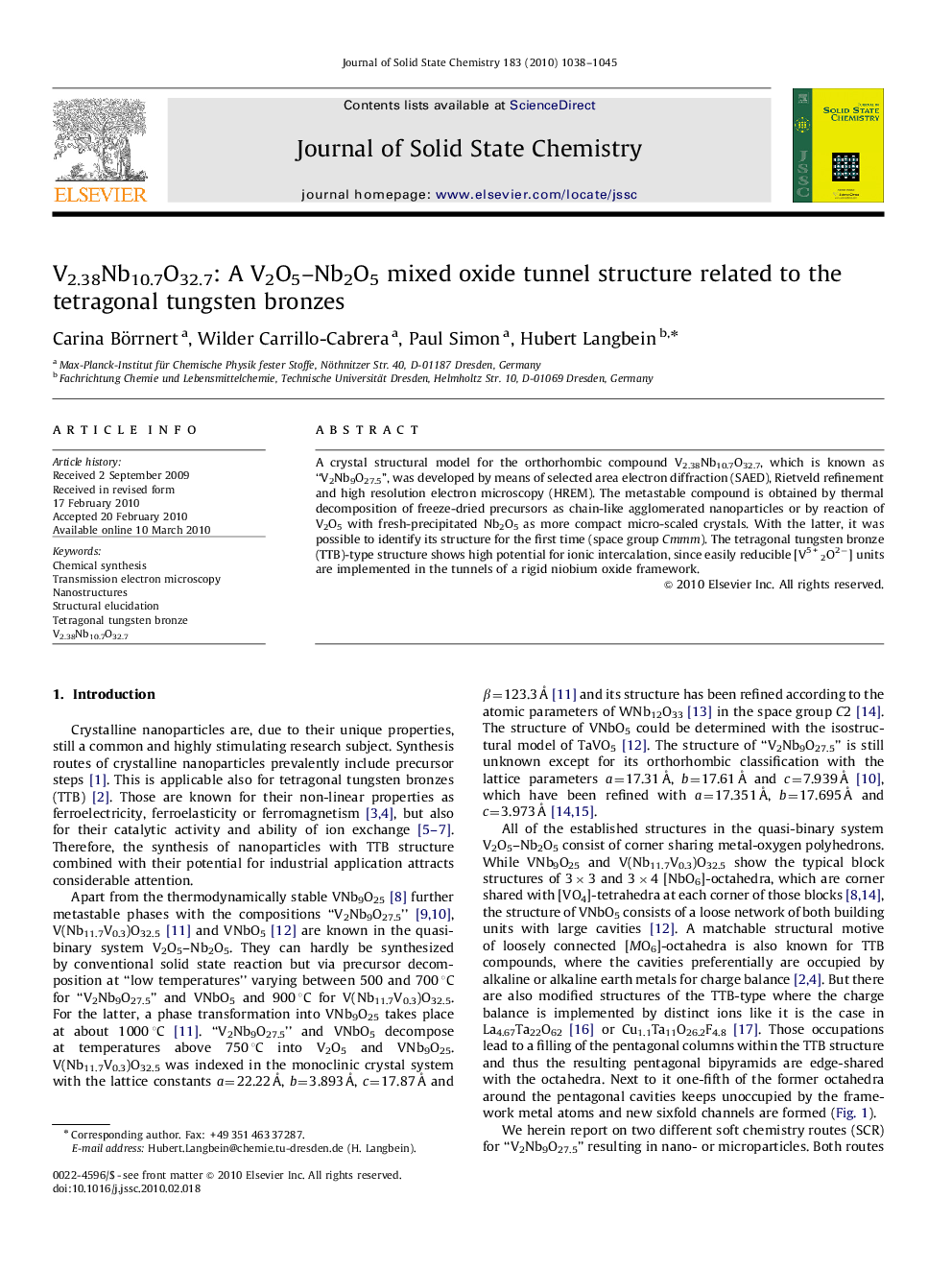| Article ID | Journal | Published Year | Pages | File Type |
|---|---|---|---|---|
| 1332594 | Journal of Solid State Chemistry | 2010 | 8 Pages |
A crystal structural model for the orthorhombic compound V2.38Nb10.7O32.7, which is known as “V2Nb9O27.5”, was developed by means of selected area electron diffraction (SAED), Rietveld refinement and high resolution electron microscopy (HREM). The metastable compound is obtained by thermal decomposition of freeze-dried precursors as chain-like agglomerated nanoparticles or by reaction of V2O5 with fresh-precipitated Nb2O5 as more compact micro-scaled crystals. With the latter, it was possible to identify its structure for the first time (space group Cmmm). The tetragonal tungsten bronze (TTB)-type structure shows high potential for ionic intercalation, since easily reducible [V5+2O2−] units are implemented in the tunnels of a rigid niobium oxide framework.
Graphical abstractA crystal structural model for the orthorhombic compound V2.38Nb10.7O32.7, which is known as “V2Nb9O27.5”, was developed by means of selected area electron diffraction, Rietveld refinement and high resolution electron microscopy. In dependence on the synthesis method the metastable compound is obtained as chain-like agglomerated nanoparticles or as more compact micro-scaled crystals. V2.38Nb10.7O32.7 is the first and only example of a compound with a TTB-type structure (space group Cmmm) in the system V2O5–Nb2O5.Figure optionsDownload full-size imageDownload as PowerPoint slide
